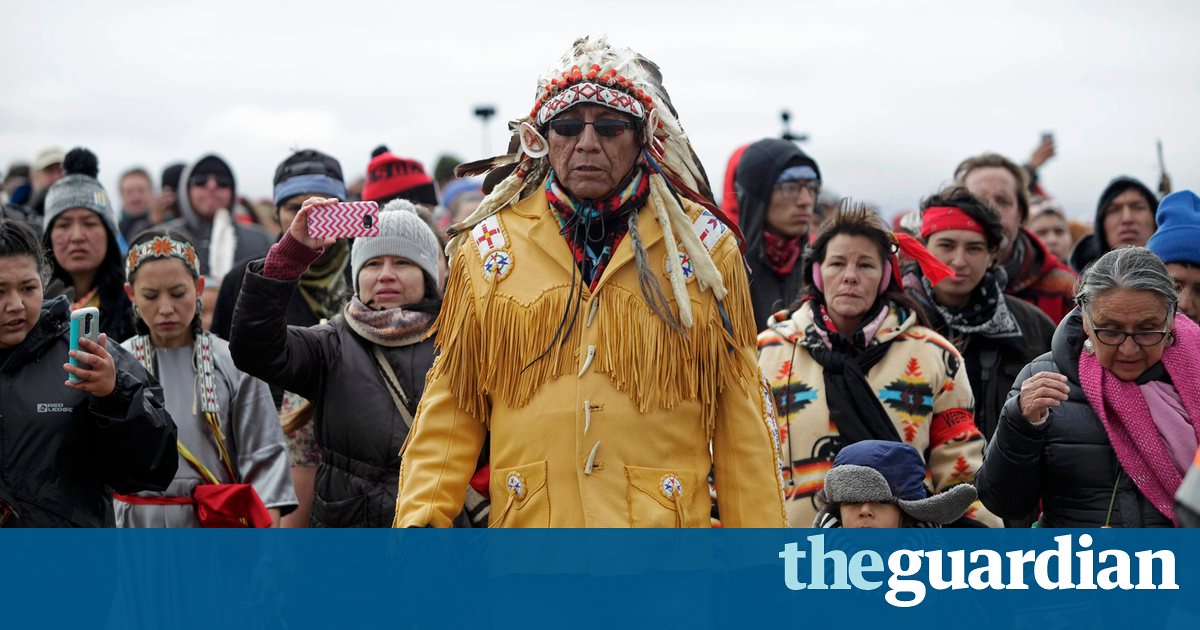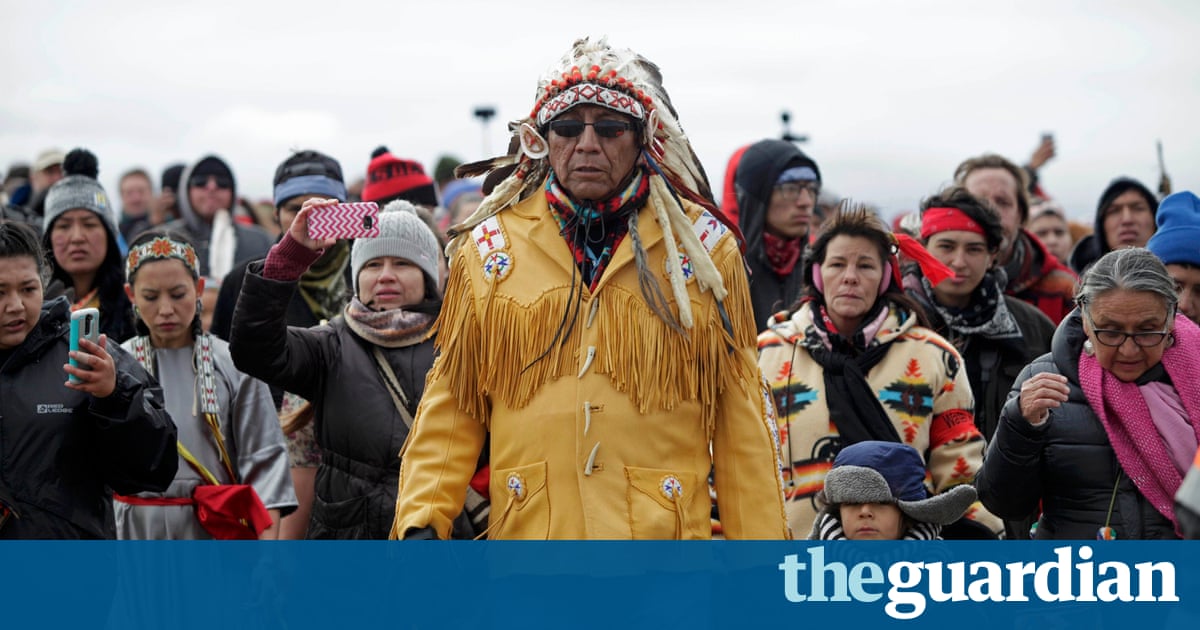Dakota Access pipeline protesters see bias after Oregon militia verdict

Activists at the Malheur wildlife refuge were carrying guns but if native people were armed, we would be killed, says an activist at Standing Rock

Johanna Holy Elk Face couldnt help but chuckle. The 63-year-old Native American was one of hundreds of activists gathered to block construction of the Dakota Access pipeline on Thursday, when police with tanks and riot gear surrounded them and began making mass arrests.
The situation was sad and frightening, she said, but there was a fleeting moment of levity when one officer on the loudspeaker warned the demonstrators not to shoot bows and arrows.
We all laughed, Holy Elk Face said, noting that she wouldnt even know how to use a toy bow and arrow.
For some Native American activists, the officers comment was the latest sign that a highly militarized police force has little understanding of indigenous culture and is set on treating the protesters like violent rioters, regardless of their tactics.
The notion that the criminal justice system is biased against Native American protesters came into sharp view hours later, when a jury in Portland, Oregon, issued a verdict of not guilty for white militia leaders who staged an armed occupation of federal land to protest government policies.
The fact that protesters with guns were acquitted on the same day police arrested 141 water protectors, who have often relied on indigenous songs and prayers to convey their message, sparked a firestorm on social media about white privilege and police brutality against people of color.
At the Standing Rock camps in North Dakota, where the fight against the $3.8bn oil pipeline is escalating dramatically, Native Americans said the Oregon verdict was an infuriating and painful reminder that the law treats them differently and that the odds are stacked against them in their high-stakes battle to save their land.
If native people were armed
On the surface, there are parallels between the Dakota Access pipeline protest and the Oregon militia standoff, in which the brothers Ammon and Ryan Bundy seized the Malheur national wildlife refuge in a protest against the governments treatment of ranchers.
In both cases, protesters declared willingness to risk their lives to fight for land rights, and law enforcement responded that the protests were illegal and dangerous.
The Oregon and North Dakota camps both grew organically in remote rural areas. Visitors to both locations have met activists from across the US who have bonded over harsh weather conditions, mistrust of the government and fear of the police. Protesters on horseback were common sights at Malheur and Standing Rock.
But the underlying tactics and core beliefs sharply diverged. The ultra-conservative activists who seized the Malheur refuge were fighting against environmental restrictions aimed at protecting open space and public lands policies cowboys said had slowly eroded their way of life.